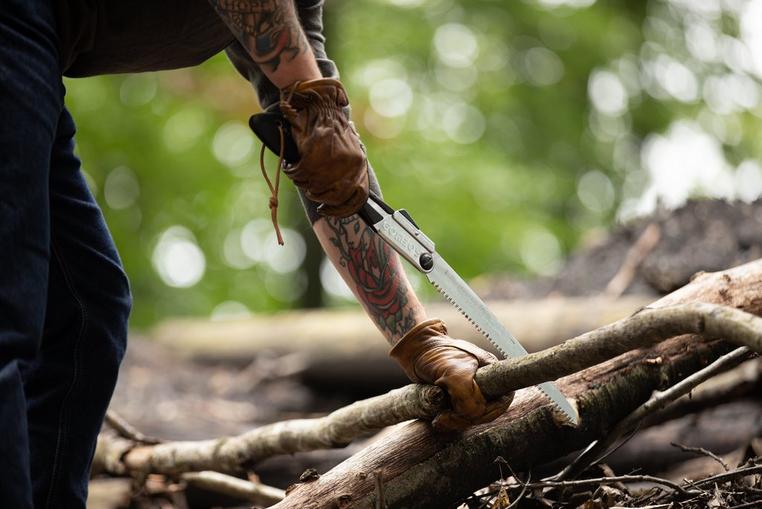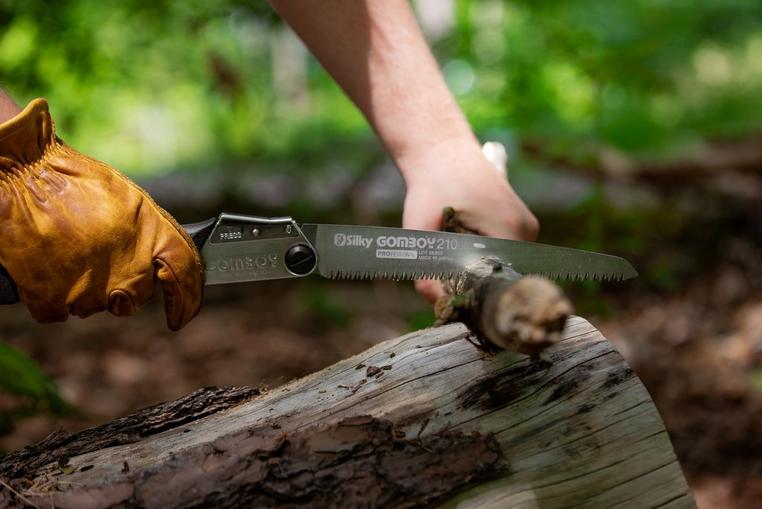How do you use a pull saw?
Using a pull saw might take some getting used to. However, if you use it correctly you work more efficiently, and it won't take as much energy. That is why we will give you some tips to make sure you can use your saw to its full extent.
Let the saw do the work
Pull saws are, as the name already suggests, designed to saw with a pulling movement. When making the first movement you make sure the serrations closest to the handle hit the wood first. After this first movement you guide the saw by pushing it back (without applying force) to the starting position. The saw doesn't require a lot of force as you use it. So let the saw do the work and don't put a lot of strain on it. As such it won't wear you out and you make sure the saw lasts longer.
Don't force it
During the pulling movement the blade of the saw won't bend, because it is not exposed to sidewards forces. The saw blade will follow the cut. If the saw is stuck, don't push too hard and don't force it. If you do your saw blade can be exposed to sidewards forces and damage or even break. Always remove the weight to free the saw. You can do this by bending the wood a little, which removes the pressure from the saw blade.
Determining how much you wood you remove
The place where you hold the handle somewhat determines how much wood you remove. If you place your hand close to the blade you also don't apply a lot of pressure. This is how you remove little wood, because you work in a controlled and precise manner. The further away from the blade you place your hand, the more pressure is applied to the saw blade. The effects are best, but a little less precise. So by adjusting the way you hold the saw you can saw any way you like!
Practice using the saw
Every pull saw cuts differently. There are many differences between a Japanese pull saw and a Western saw. A Japanese saw does all the work during the pulling motion. The pulling motion is typical for Japanese saws. It ensures that the saw does all the heavy lifting because the pulling motion puts tension on the saw blade. As a result, it will not fold when you're sawing. This is something that can happen with Western saws.
Carefully practice using your saw so you get to know how it works and how to cut in the most effective way possible. You can try sawing at different angles, or try holding the handle in different ways. Figure out what works best for you, so that you saw as easily as possible. Some saws allow you to adjust the handle if needed, such as the Z-saw and some Silky saws. As such, you can cut at different angles. Want to know how to maintain a saw? Read all about maintaining your saw here.









